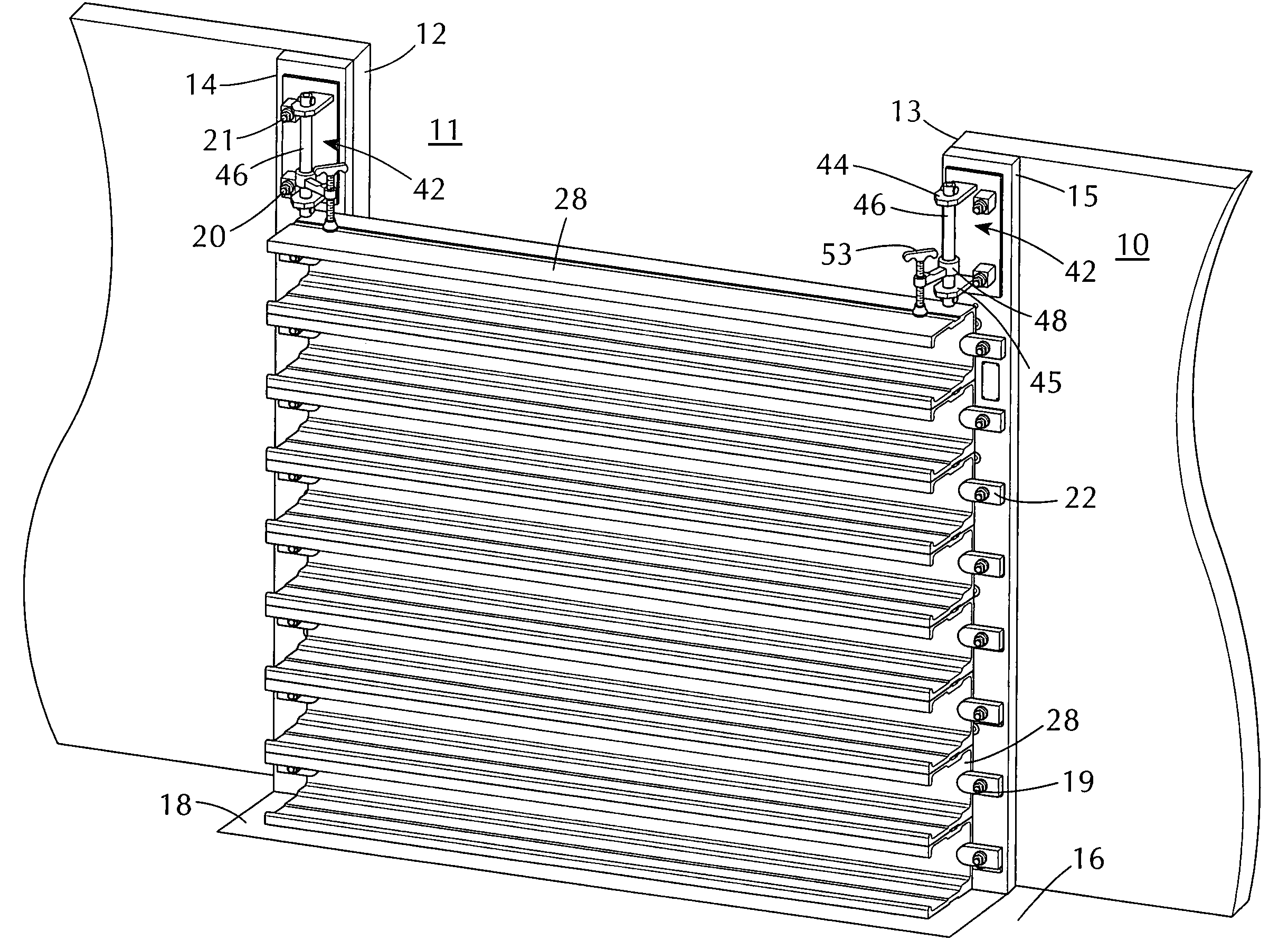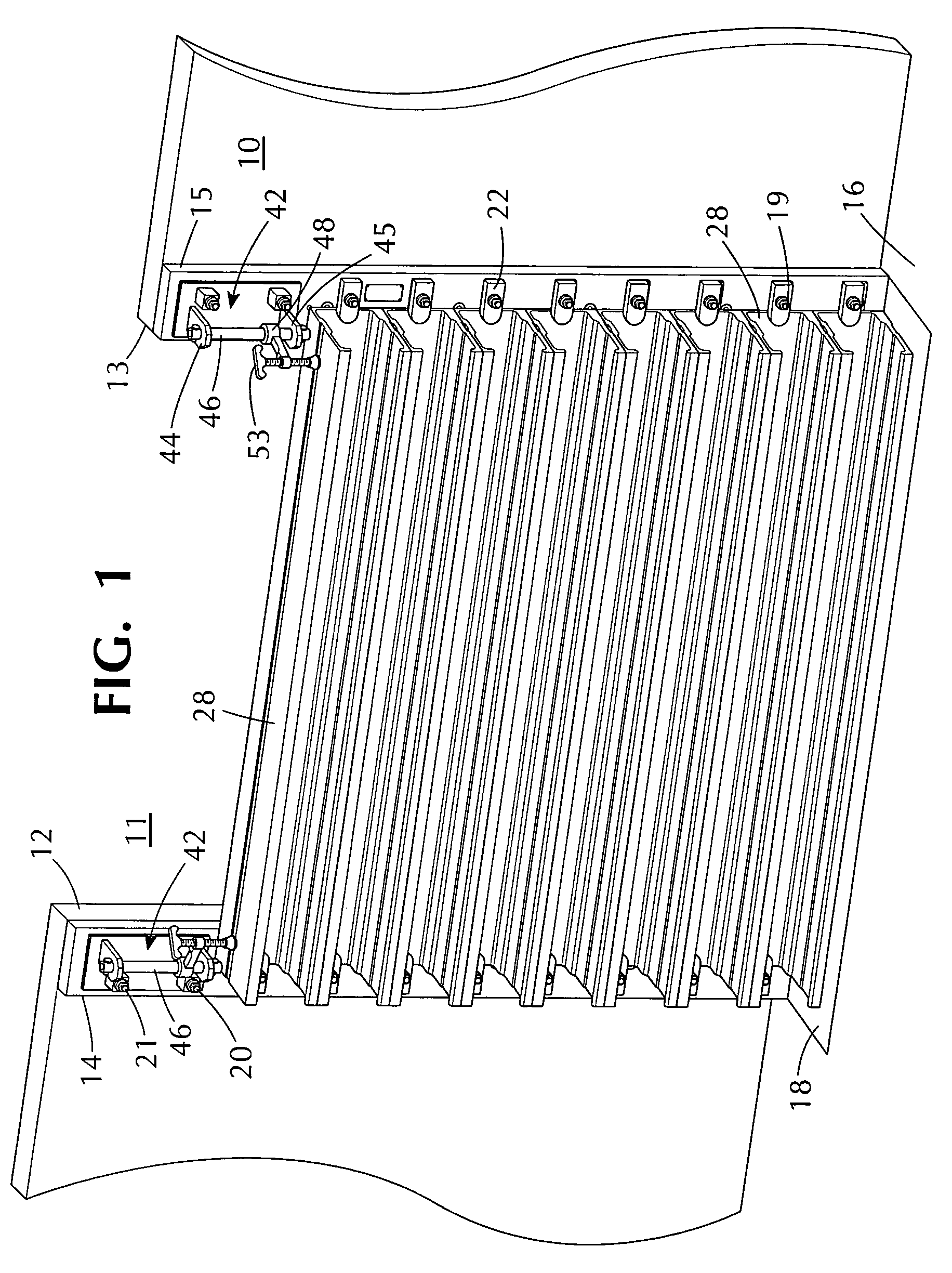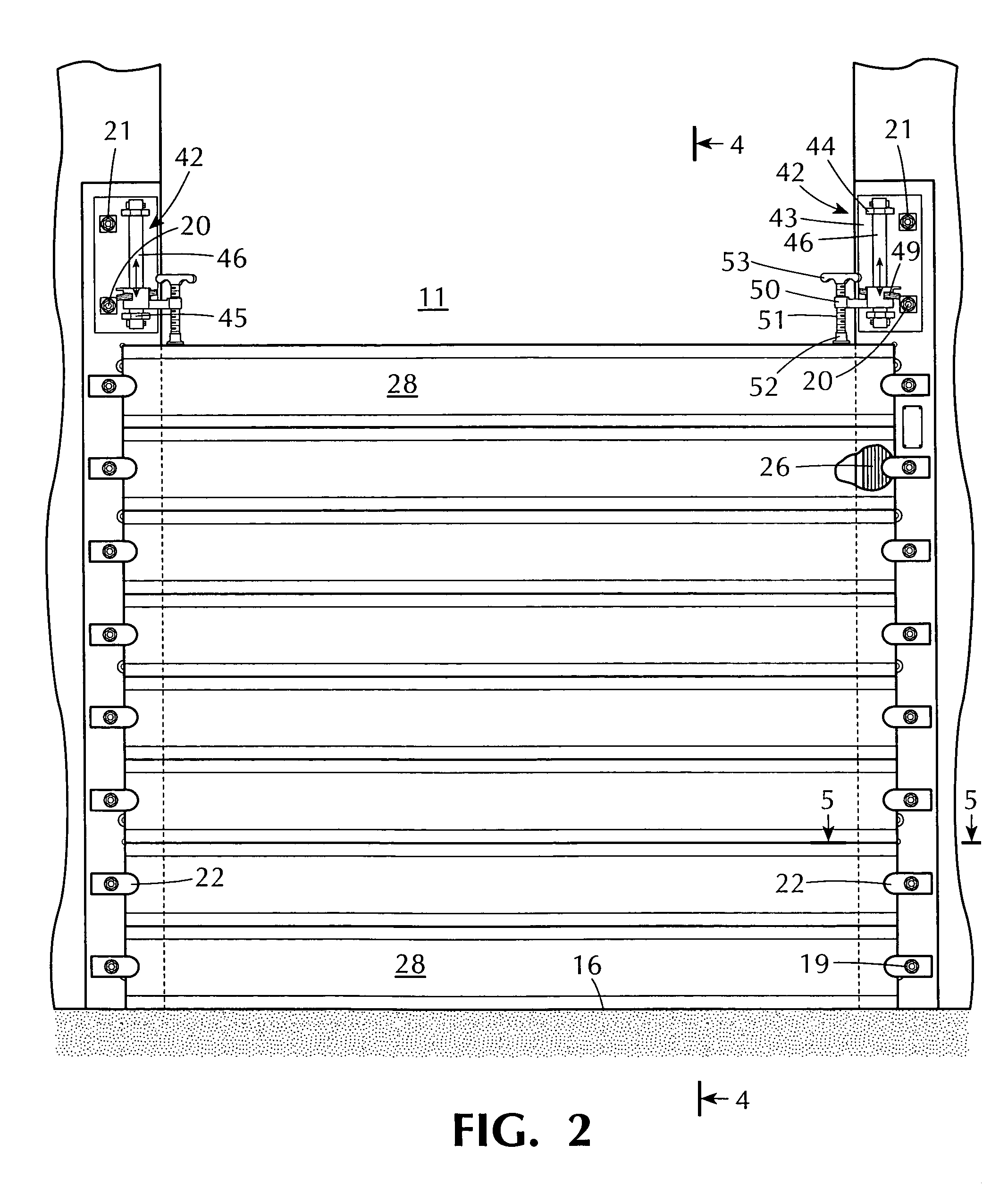Flood barrier system
a technology of flood barrier and sluice plate, which is applied in the direction of shutter/movable grille, manufacturing tools, construction fastening devices, etc., can solve the problems of large damage, inundation of the entire structure, and floodwater occasionally in homes, offices, and factories, etc., and achieves the effect of quick and easy removal
- Summary
- Abstract
- Description
- Claims
- Application Information
AI Technical Summary
Benefits of technology
Problems solved by technology
Method used
Image
Examples
Embodiment Construction
[0017]Referring now to the drawings, the reference numeral 10 designates generally a wall structure of a typical commercial building, for example, having an opening 11 therein. In the illustrated example, the opening 11 is intended to represent a typical doorway. The upper portion of the wall structure 10 and the opening 11 is omitted from the illustration as it plays no part in the description of the invention. Along each side 12, 13 of the opening 11 there are vertically disposed sealing plates 14, 15 which extend from ground level (shown at 16) for a suitable vertical distance for dealing with expected flooding levels in the region. Typically, for an opening 11 of significant height, such as a doorway, a flood barrier need not extend for the full height of the opening and, in the illustrated embodiment of the invention, the sealing plates 14, 15 may extend upward for a distance of around five feet, suitable for constructing a flood barrier of about four feet in height. The sealin...
PUM
| Property | Measurement | Unit |
|---|---|---|
| height | aaaaa | aaaaa |
| height | aaaaa | aaaaa |
| width | aaaaa | aaaaa |
Abstract
Description
Claims
Application Information
 Login to View More
Login to View More - R&D
- Intellectual Property
- Life Sciences
- Materials
- Tech Scout
- Unparalleled Data Quality
- Higher Quality Content
- 60% Fewer Hallucinations
Browse by: Latest US Patents, China's latest patents, Technical Efficacy Thesaurus, Application Domain, Technology Topic, Popular Technical Reports.
© 2025 PatSnap. All rights reserved.Legal|Privacy policy|Modern Slavery Act Transparency Statement|Sitemap|About US| Contact US: help@patsnap.com



